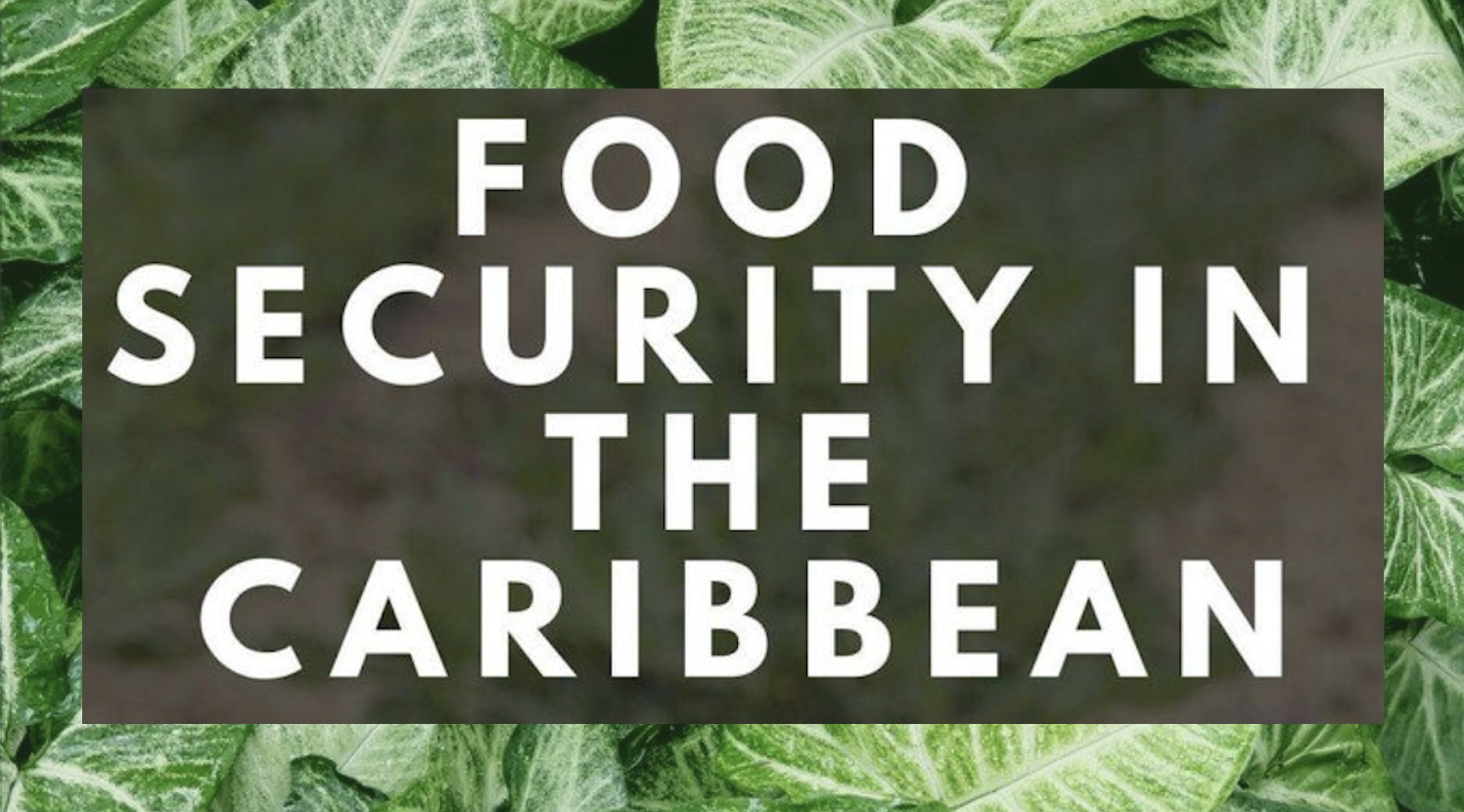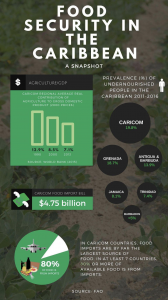
Culture
Five Overlooked Facts About Caribbean Food Security
Between 2005 and 2017, the proportion of undernourished people in the Caribbean region declined from 23.3% to 16.5%. Given this success in meeting global hunger targets and based on projections for lower food prices and rising incomes, the United States Department of Agriculture has predicted that food security in the Caribbean will improve over the next decade.
Although these numbers mask a case of extreme vulnerability, both from the perspective of public health and the economy. For example, while it is extremely promising that countries like Barbados have a rate of undernourishment of less than 5% (FAO) it must also be noted that Barbados has the highest prevalence of diabetes in the Americas, and double the world’s affliction rate.
This is the other side of malnutrition and the main reason why source and quality of nourishment are critical to any discourse surrounding food security

Most Caribbean countries are Net Food Importing Developing Countries—that is, imports are the dominant source of food energy.
The combined food import bill for the 14 CARICOM (Caribbean Community) member countries increased from $2.08 billion in 2000 to $4.75 billion in 2018, pre-imposition of duties, levies, and taxes. If current trends continue, this is expected to increase to $8-10 billion by 2020. These figures represent more than 60% of total food consumption for almost all CARICOM members, with half of them importing more than 80% of the food they consume. Belize, Guyana, and Haiti are the only CARICOM nations that produce more than 50% of their consumption. (FAO)
In many areas, national food production has declined (most notably in fruits and vegetables) and has been replaced with imports.
In Trinidad and Tobago, for example, National Flour Mills (NFM) figures indicate a significant decline in rice production over the past 27-years, from 21,200 tonnes to 585 tonnes in 2019— despite the fact that the local demand for the staple is 34,000 tonnes annually. In the context of Jamaica, domestic consumption of onions is currently 10 million kilograms per annum, of which imports account for more than 85% (Source: Caribbean Broilers). Remediation of these trends will require a shift in agricultural priorities, as well as a strategic approach to replace imports with local commodities. There is an opportunity for specific crops, such as cassava, for example, to be used for import substitution. According to the FAO, cassava has the potential to replace 400,000 metric tonnes of wheat flour in the Caribbean and if used for food, flour, feed and beer, it could help reduce the region’s food import bill by 5%.
Lack of local production means that Caribbean people tend to eat more highly processed foods that have a long shelf life.
Imported foods tend to be lower in nutrients and higher in calories, fats, sweeteners and sodium. According to the FAO, processed foods, grains and livestock products are among the top five food import categories in the region. These poor food choices are correlated with the Caribbean having the highest obesity rates in the Americas, with non-communicable diseases accounting for 3 out of 4 deaths.
Lack of local production is bad for local economies.
Agriculture’s contribution to GDP has declined steadily over the years with less than a 2% contribution for Barbados, St. Kitts and Nevis and St. Lucia and less than 1% for Trinidad and Tobago. A high import bill exposes the region to global food price shocks— it has been estimated that with high import prices, many families are spending as much as 75% of their income on food. According to the FAO, ‘A continuation of the current CARICOM food import bill trends can only lead to further nutritional and economic impoverishment for the people of the Region for generations to come.’
Climate change makes it more difficult to produce locally.
According to the FAO, crop yield declines of 10-25% may be prevalent by 2050 because of climate change. Extreme heat, droughts, floods, salt water encroachment due to rising sea levels and storms harm agricultural productivity and cause food price hikes and income losses. In Grenada, post-Hurricane Ivan, Grenada’s surplus of $17 million turned into a deficit of $54 million. The total damage and loss to the agriculture sector experienced by Dominica and Antigua and Barbuda after the 2017 hurricane season was $212 million and $0.5 million, respectively. There is an urgent need for the region to implement climate-sensitive agriculture in order to minimize the risks associated with climate change.
In order to reverse these trends, the Caribbean must develop a strategic agenda towards improving agricultural climate resilience through modernisation, production efficiency, scale and consistency. Financial planning must include resource allocation in the areas of technology, strengthened infrastructure, innovation, improved governance and effective policy-making. Incentives, advocacy and education will also encourage more young people to join the agricultural sector.
The simple truth is, you need arable land for agricultural production. Less available land means less production.
Land banks would be an effective measure towards reversing this trend— state land could be leased to would-be farmers who would also be provided with credit. Urban and kitchen gardens could also help to alleviate the problem of scarce agricultural land. In Barbados, Ino-gro Inc.’s vertical farming model allows the company to practise high-density farming in a relatively small area and under controlled conditions that are technologically managed— and most importantly, locally grown.
The FAO defines food insecurity as ‘A situation that exists when people lack secure access to sufficient amounts of safe and nutritious food for normal growth and development and an active and healthy life.’ For the Caribbean, a progressive agricultural agenda that places local production at its core is critical to achieving this objective.




